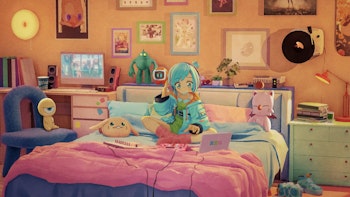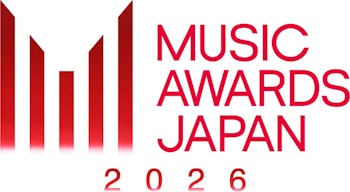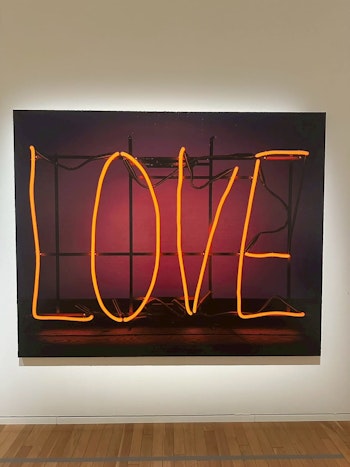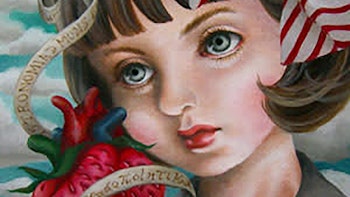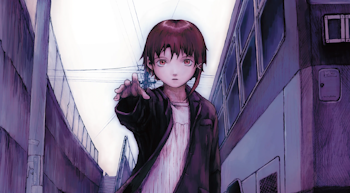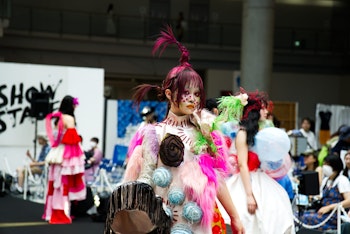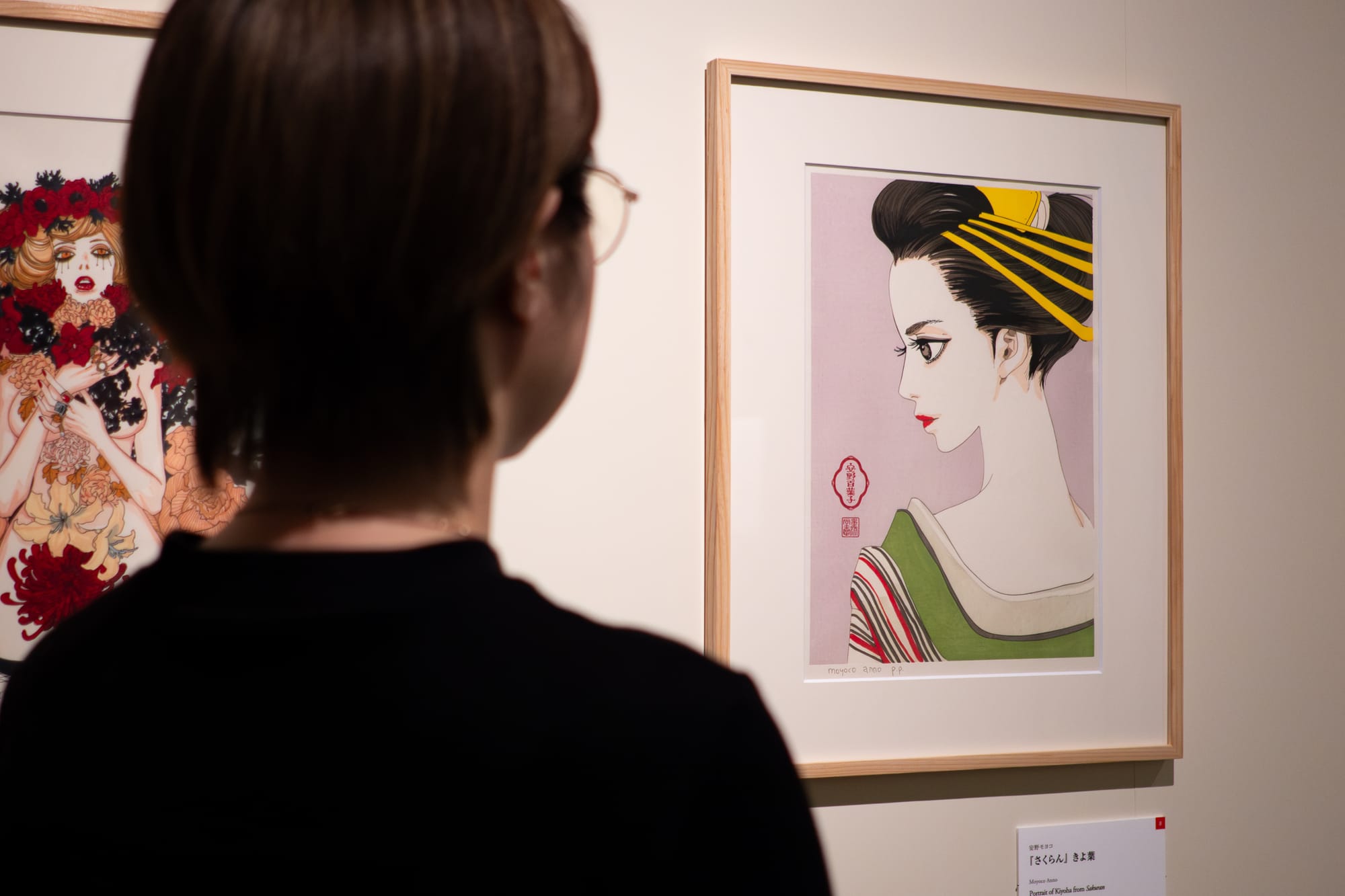
It could be said that no Japanese art form has been more globally influential than ukiyo-e. Anime, video games, and pop culture have made the modern country a cultural behemoth in the last 50 years, but long before that in the 19th century, a wave of “Japonisme” swept across Europe and North America, driven in part by imported woodblock prints. These “pictures of the Floating World” by Utagawa Hiroshige and Katsushika Hokusai among others, printed in thick lines and fluorescent colors, served as the West’s first glimpses at the mysterious island nation.
Ukiyo-e prints found their way into the hands of artists such as Degas, Whistler, and, crucially, Van Gogh. The Dutch artist made his own reproductions of prints by Hiroshige, and the bright colors and stylization of ukiyo-e images heavily influenced his artistry. The entrance of such strange and new ideas into Western art caused nothing short of a revolution. The abstract nature of Japanese pictures would help launch the impressionist movement and eventually inspire what we now call modern art, freeing painters from the need to perfectly reproduce the world and letting them explore form, motion, color, and other themes in more direct and inventive ways.
Ukiyo-e serves as an extension of Japanese soft power as much as anime and manga – in fact it’s considered a progenitor to manga, one of the first mass-produced, populist art forms. It’s also, as a uniquely Japanese art form, a natural tourist draw: In Tokyo today one can find galleries and antiquarian bookstores in Asakusa and Jimbocho full of ukiyo-e prints, both cheap reproductions and pricey originals.
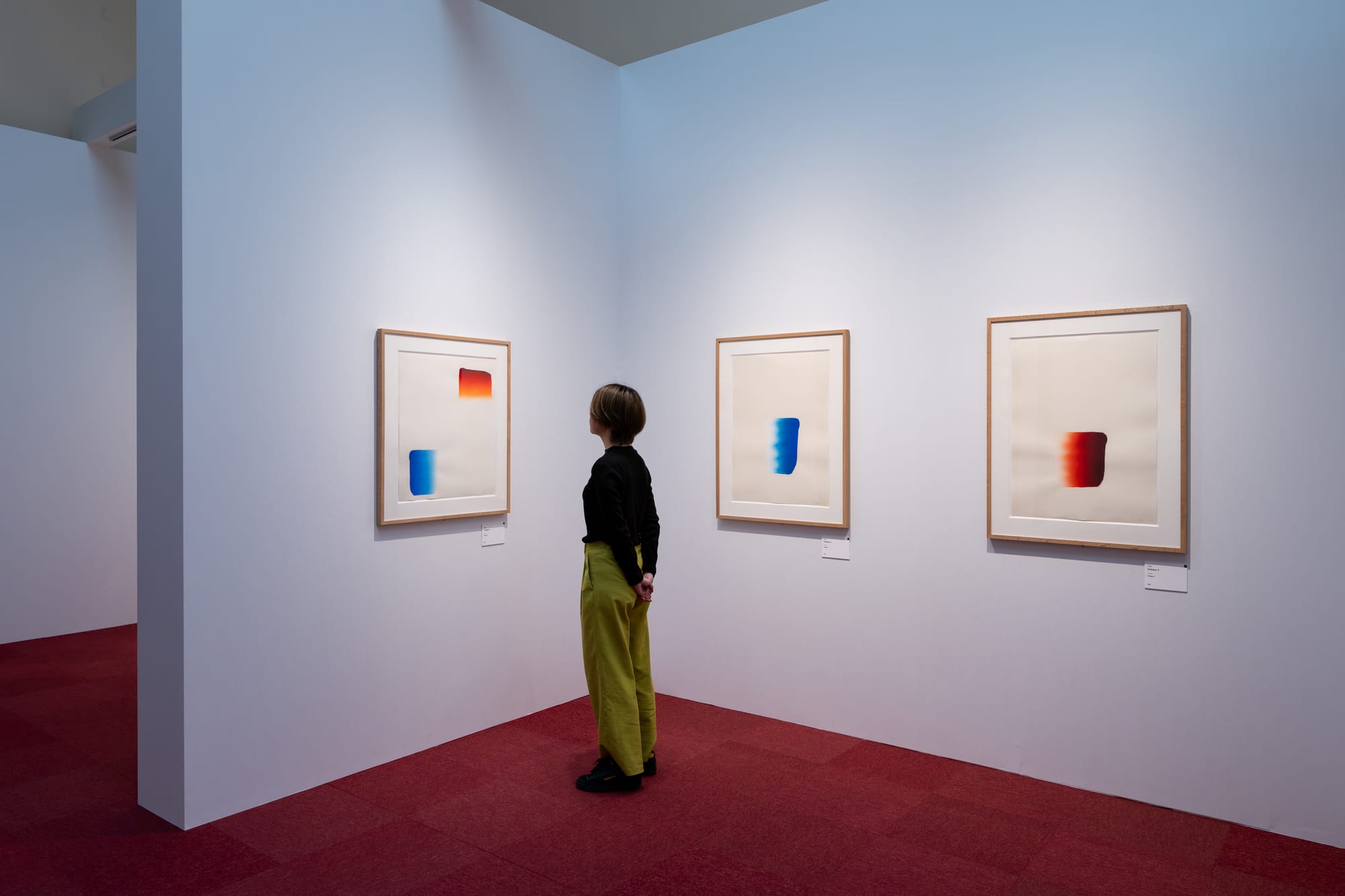
So it makes sense that an institution like the Tokyo National Museum would mount an entire exhibition, “Ukiyo-e in Play,” meant to argue that ukiyo-e is still a vital medium. In a way it’s true: while the iconic images from the art form’s Edo period peak remain the most famous, woodblock printing never exactly died out. Shin-hanga artists such as Hasui Kawase and Hiroshi Yoshida injected ukiyo-e with the same realism that western artists were abandoning in the early 20th century. And other revivals of the style have periodically occurred over the past century.
The exhibition, which closed on June 15 also makes the case for ukiyo-e as a living tradition. Most of the prints were produced with the assistance of the Adachi Institute of Woodcut Prints, a Tokyo-based institution dedicated to preserving traditional ukiyo-e production techniques, and the show doubles as advocacy for their craftsmanship and mission. The process of collaboration between the artists and the artisans mirrors that of the original industry of woodblock printing: Artists would paint a base design, which would then be sent to a publisher and printed en masse.
Unsurprisingly, the show starts with a section on the manga connection with prints from a succession of manga artists, including Moyoco Anno and Shotaro Ishinomori. Most of these are unoriginal riffs on the classic ukiyo-e scenes, transposing characters from the likes of Gegege no Kitaro and The Rose of Versailles into Hiroshige and Hokusai. Almost none of the characters or artists, save perhaps for Ilya Kuvshinov’s portrait of Major Kusanagi from Ghost in the Shell, would be known to a Western audience more accustomed to One Piece and DanDaDan than Golgo 13 or Makoto-chan. This isn’t necessarily a misstep but certainly indicates that appealing to international tourists was low on the curators’ list of priorities.
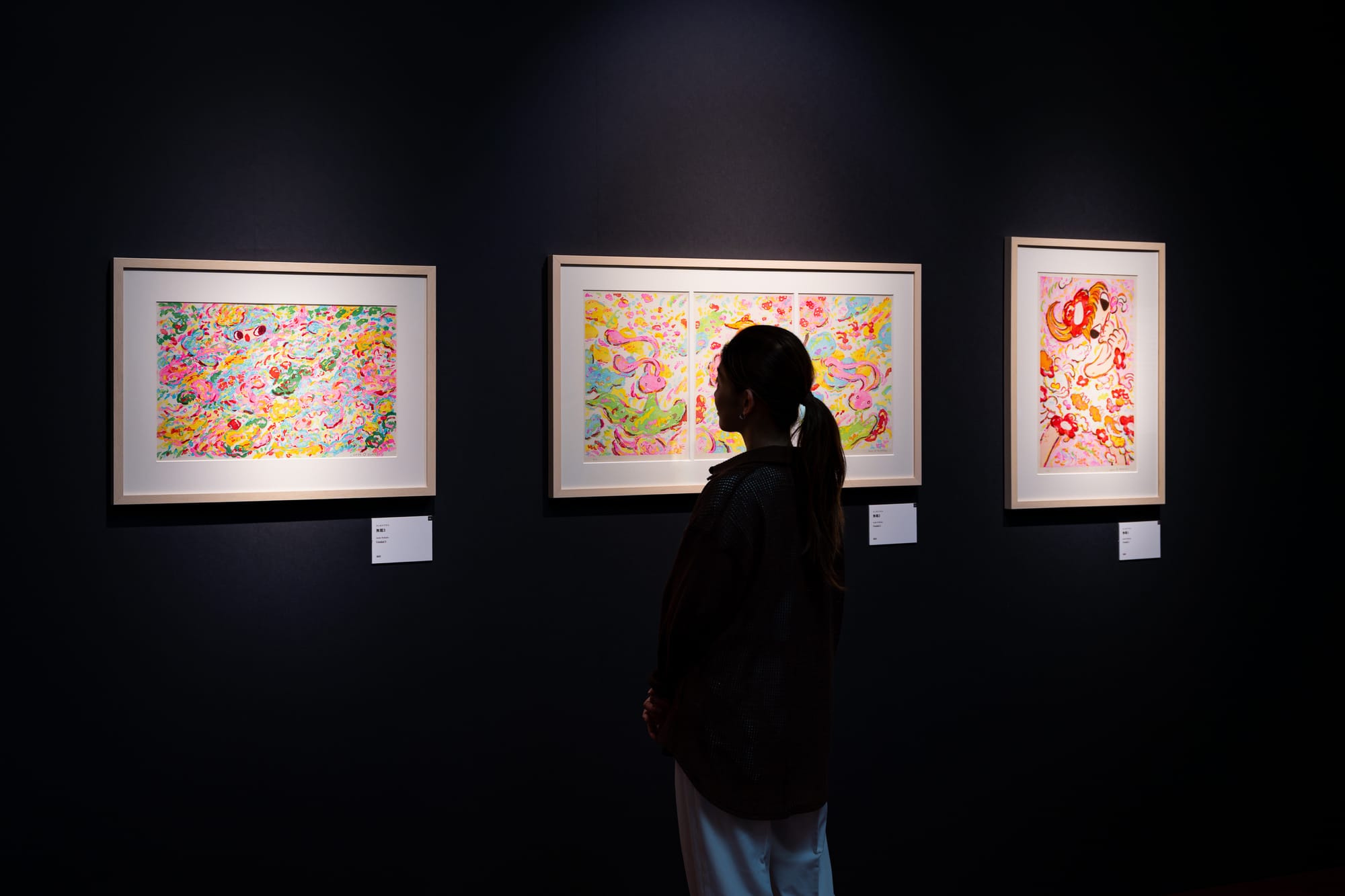
Much more recognizable are the prestigious contemporary artists that make up the bulk of the show: Izumi Kato, Claire Tabouret, Tadanori Yokoo, Chris Ofili. Yayoi Kusama, undoubtedly the art world’s greatest celebrity, gets a whole room to herself for her prints of Mt. Fuji, riffing on Hokusai’s own famous images of the sacred mountain. Some like abstract painter Lee Ufan, pop artist Keiichi Tanaami, and illustrator Hiroshi Nagai do little more than transpose their particular style into the woodblock medium. It can be interesting to see the way, for instance, Lee’s colors are made bolder by the matte finish of a print, but ultimately a lot of these works feel limited, hemmed in by their artists’ need to reproduce their signature style on washi paper. And a lot of the prints are, to be blunt, just plain bad, particularly the cringey, Banksy-esque street art-style designs by Nick Walker and Martin Whatson and the tacky pop art imagery of Alison Elizabeth Taylor.
The most interesting works in this section manage instead to truly investigate what makes the medium unique. For his RAPT series, Anthony Gormley played with the medium’s reproductive aspects, marking up his prints with sumi ink before sending them to the Adachi printmakers, resulting in a slightly different image each time. I found the bleary, watercolor-esque prints by Leico Ikemura and Yuko Shiraishi particularly interesting, with Shiraishi providing an artistic response to Van Gogh’s ukiyo-e obsession with her own take on his famous Starry Night scenes. Chiharu Shiota achieves a similar feat with her Connected to the Universe sequence, putting her famous red thread installations on paper in a way that retains their power and perspective.
These works don’t simply ask us to admire what a well-known artist's work looks like in woodblock form. They show us an artist exploring what can be done with the medium, hundreds of years on from Hokusai. The most revelatory parts of “Ukiyo-e in Play” had little to do with famous manga or celebrity artists (or literal celebrities: a handful of prints by Takeshi Kitano appear at the end), instead focusing on more experimental imagery and emotive illustration. I was amazed by the abstract prints from Ikko Tanaka, all dating back to the Showa era, showing a series of rope knots floating over moody nighttime landscapes like the alien Angels from Evangelion. Kisho Kurokawa, architect of the iconic Nakagin Capsule Tower and a founder of the Metabolist movement, used the medium for impressive architectural illustrations, while Kiyoshi Awazu’s Fantasies on Japanese Playing Cards reinterpreted the classic hanafuda deck.
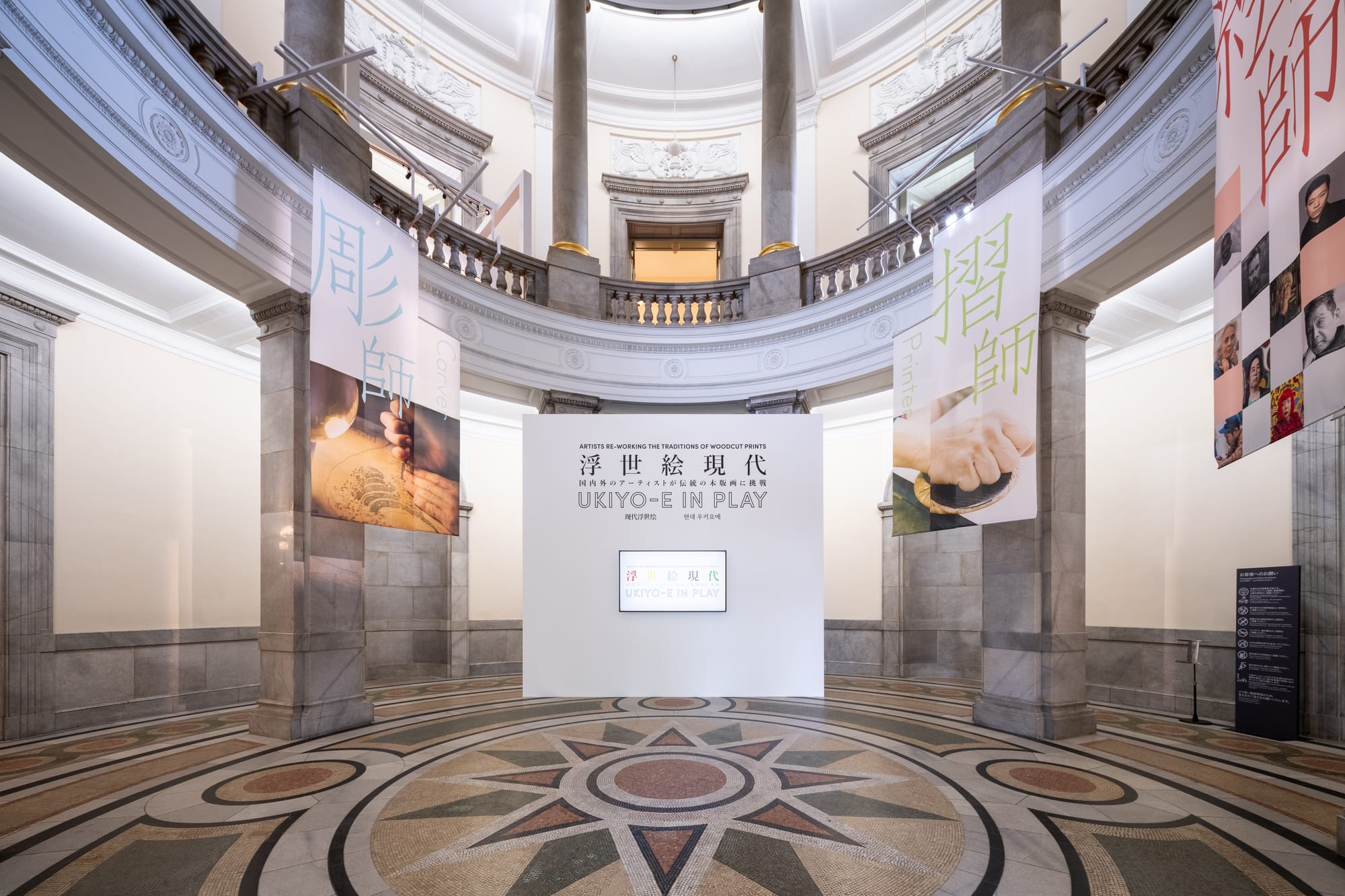
One final section, showing a handful of prints from recent winners of the Adachi Contemporary Ukiyo-e Award, speaks especially to the contemporary potential of the medium. Fantastical scenes like a soba noodle mountain by Rimo Shiyotsu contrast with more quotidian themes: I admired a print by Fuka Ogihara of a woman staring at her reflection in a mirror, an anguished expression on her face. It’s a striking, emotional illustration of a contemporary scene that also uses what’s unique about the medium, the defined lines and gradiation of colors: Ogihara smartly colors the scene monochromatically to highlight the girl’s red lipstick and the pink tones of her fingertips and knees. It’s a work that exemplifies the true meaning of the genre’s name: as a block of wall text in the show explains, “the floating world” isn’t a place, but rather “the fleeting and ever-changing present.” This is the essence of ukiyo-e: An art for everyone that reflects the world and everything in it.





